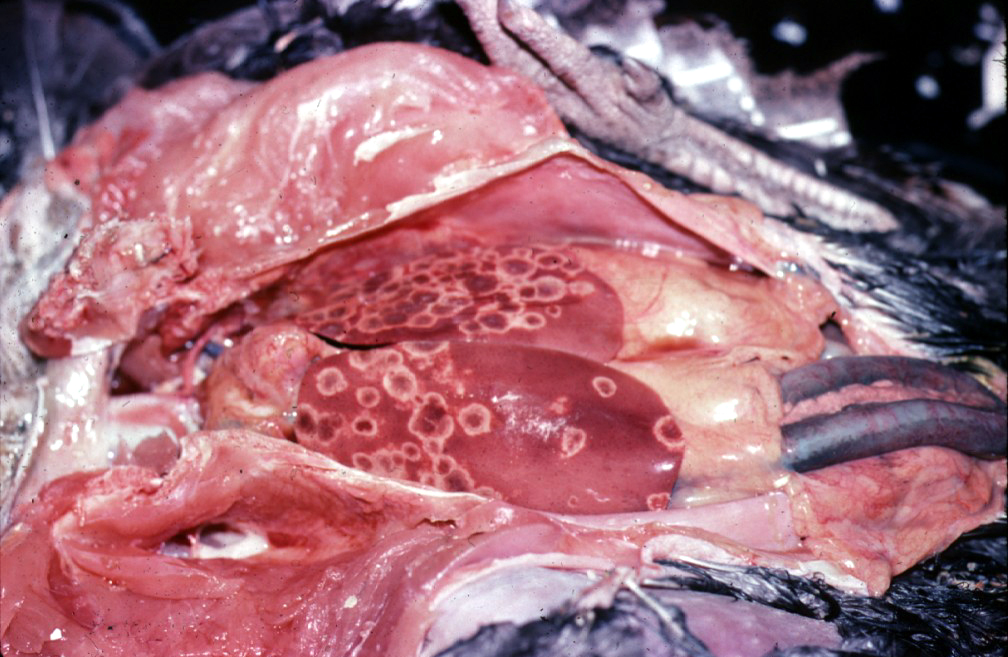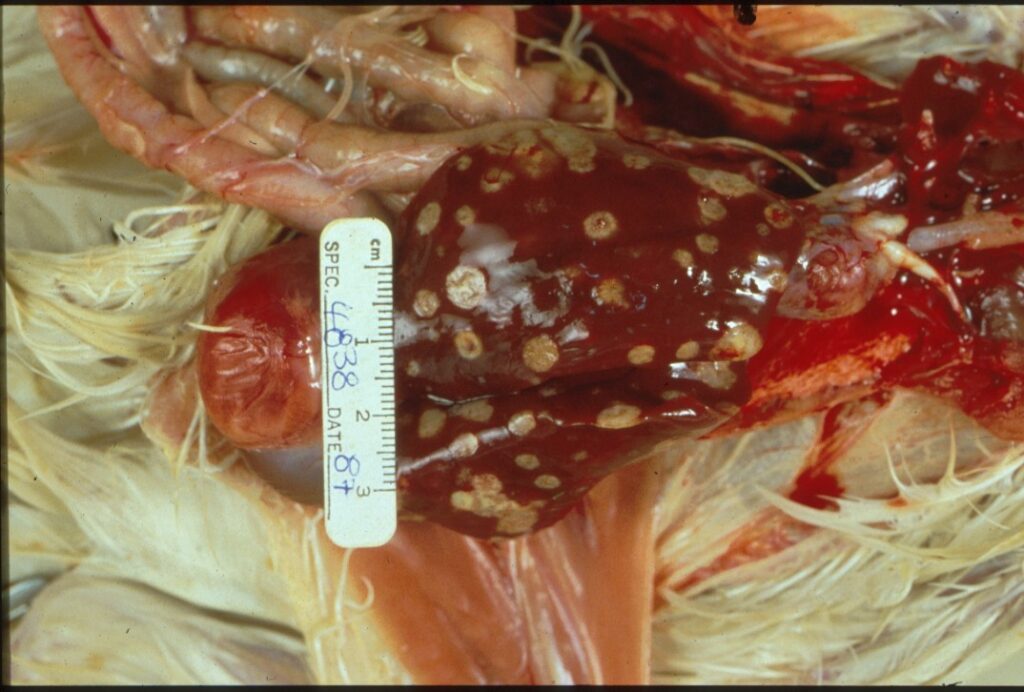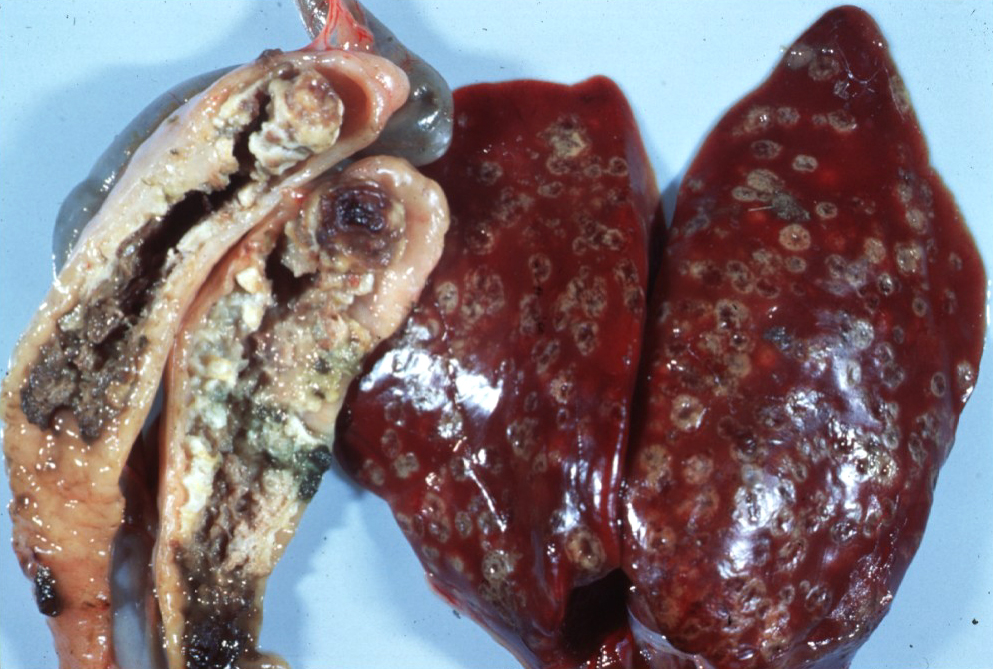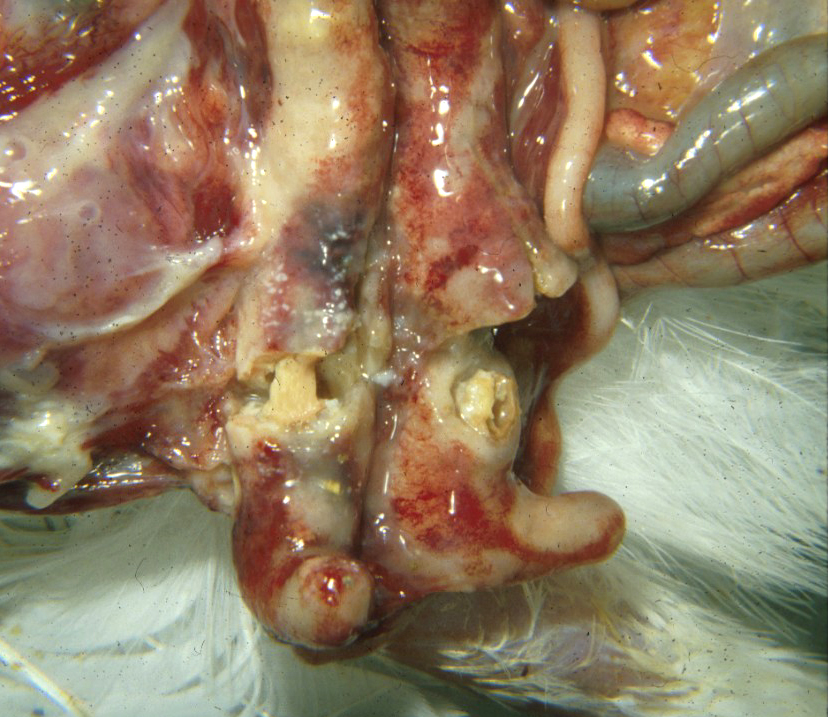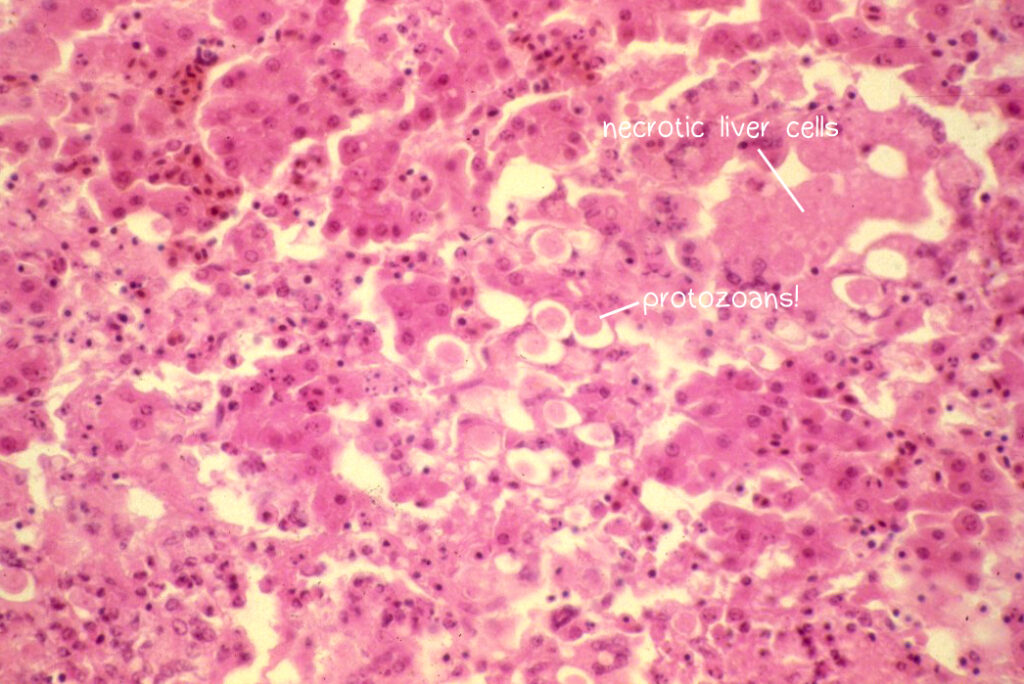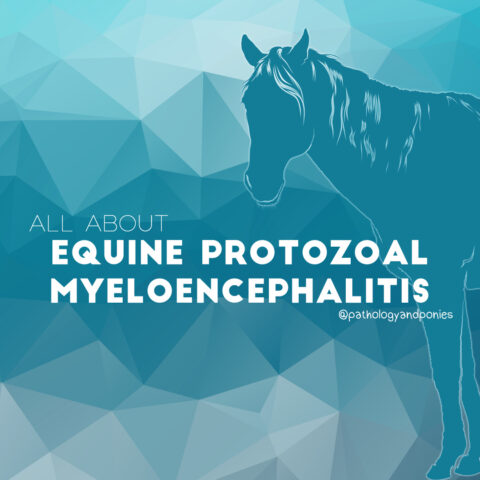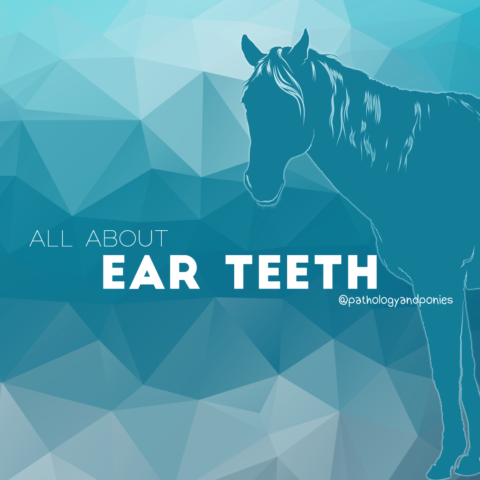Today’s path rounds are on 𝐛𝐥𝐚𝐜𝐤𝐡𝐞𝐚𝐝, otherwise known as 𝐡𝐢𝐬𝐭𝐨𝐦𝐨𝐧𝐢𝐚𝐬𝐢𝐬.
𝐖𝐡𝐚𝐭 𝐢𝐬 𝐢𝐭?
𝐁𝐥𝐚𝐜𝐤𝐡𝐞𝐚𝐝 is a parasitic disease caused by a 𝐩𝐫𝐨𝐭𝐨𝐳𝐨𝐚𝐧, which are small single celled organisms. Interestingly, this protozoan is transmitted alongside another parasite, the roundworm 𝐇𝐞𝐭𝐞𝐫𝐚𝐤𝐢𝐬 𝐠𝐚𝐥𝐥𝐢𝐧𝐚𝐫𝐮𝐦. So these poor animals end up with two parasitic infections for the price of one!
𝐖𝐡𝐨 𝐠𝐞𝐭𝐬 𝐢𝐭?
Any 𝐠𝐚𝐥𝐥𝐢𝐧𝐚𝐜𝐞𝐨𝐮𝐬 (poultry and game birds) bird species can get it, but we most commonly think of this disease in turkeys. In turkeys, mortality rates can be up to 80-100%!
𝐖𝐡𝐚𝐭 𝐜𝐚𝐮𝐬𝐞𝐬 𝐢𝐭?
As mentioned before, this protozoan likes to hitch a ride on the roundworm Heterakis gallinarum. This roundworm is transmitted primarily by earthworms, who ingest the roundworm’s eggs as they go about their earthworm life. The turkey or chicken then eats this earthworm, the egg hatches, and the bird becomes infected.
𝐖𝐡𝐲 𝐢𝐬 𝐭𝐡𝐢𝐬 𝐚 𝐩𝐫𝐨𝐛𝐥𝐞𝐦?
Once the protozoans are within the bird, they migrate into the wall of the 𝐜𝐞𝐜𝐚, part of the large intestine. Here, they cause damage to the intestinal wall causing inflammation and leakage of 𝐩𝐮𝐬 (fluid filled with inflammatory cells) that forms a cheesy, firm mass in the ceca. Gross. These protozoans also like to migrate to the liver, where they cause 𝐧𝐞𝐜𝐫𝐨𝐬𝐢𝐬 (cell death) in characteristic circular shapes.
𝐇𝐨𝐰 𝐢𝐬 𝐢𝐭 𝐝𝐢𝐚𝐠𝐧𝐨𝐬𝐞𝐝?
Usually this disease is diagnosed by necropsy, specifically looking for the 𝐜𝐞𝐜𝐚𝐥 𝐜𝐨𝐫𝐞 of pus in the ceca, and the liver spots. Seeing both of these lesions together is considered 𝐩𝐚𝐭𝐡𝐨𝐠𝐧𝐨𝐦𝐨𝐧𝐢𝐜, meaning that no other diseases present like this. So if you see them, you know what you’re dealing with! If you want to further confirm the diagnosis, you can do testing to specifically identify the protozoans DNA, or look at the tissue under a microscope to see the protozoans directly.
𝐇𝐨𝐰 𝐢𝐬 𝐢𝐭 𝐭𝐫𝐞𝐚𝐭𝐞𝐝? 𝐇𝐨𝐰 𝐢𝐬 𝐢𝐭 𝐩𝐫𝐞𝐯𝐞𝐧𝐭𝐞𝐝?
Unfortunately, there are currently no approved treatments for blackhead. So prevention is key! Turkeys should not be raised with other poultry species, because many of those species can have 𝐬𝐮𝐛𝐜𝐥𝐢𝐧𝐢𝐜𝐚𝐥 (no presenting symptoms) infections, allowing the protozoan to transmit to the turkey before anyone knows what’s going on. If possible, turkeys should also be kept in environments with no earthworms, to prevent them from acquiring the disease through roundworm infection.
𝐏𝐡𝐨𝐭𝐨𝐬
1-2) Examples of the liver necrosis seen during necropsy. Kinda pretty!
3-4) Examples of cecal cores.
5) Both lesions together!
6) What a pathologist might see looking at liver tissue under the microscope. Those little pink blobs are the protozoa itself!
𝐒𝐨𝐮𝐫𝐜𝐞𝐬
Beckstead, R.B. Histomoniasis in Poultry. Merck Veterinary Manual, 2019.
Photos 1-6 © Noah’s Arkive contributors Holshuh, Luginbuhl, Page, Reece licensed under CC BY-SA 4.0.

